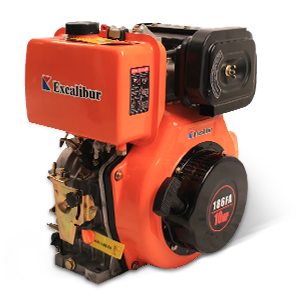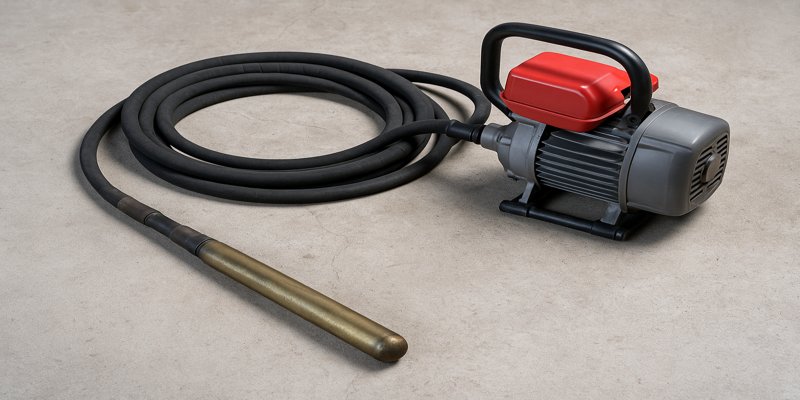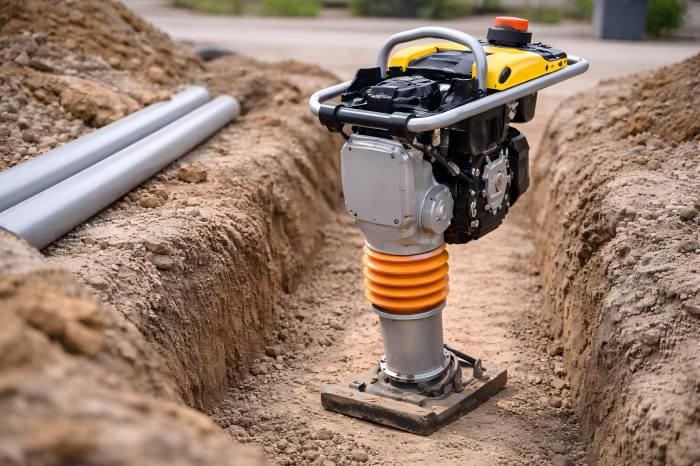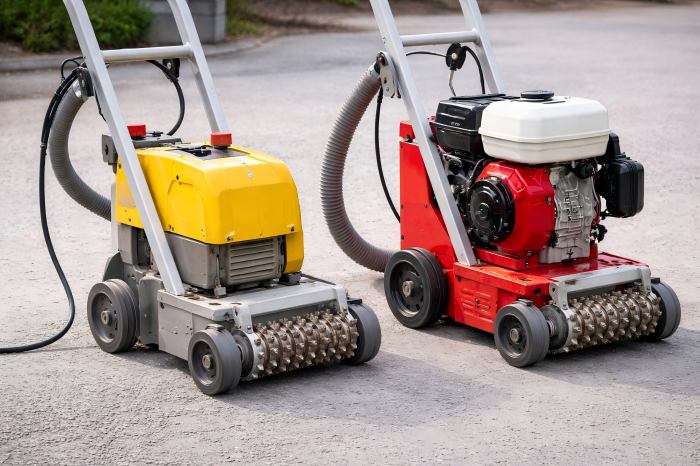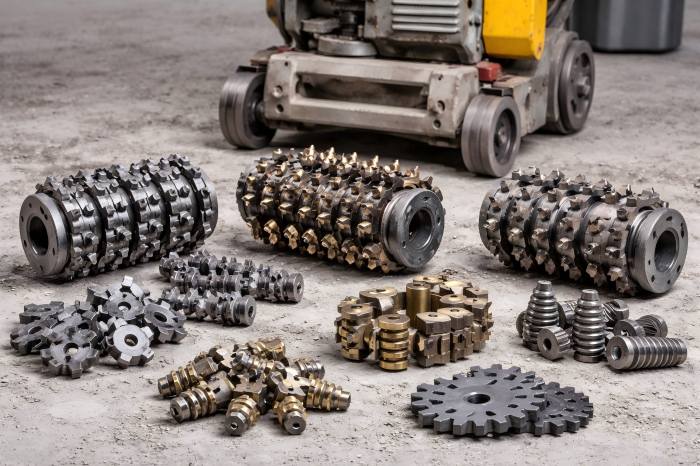When working with concrete, achieving optimal compaction is critical for the strength, durability, and longevity of the structure. One of the most effective tools for this job is the poker vibrator (also known as an internal vibrator or needle vibrator). It operates by inserting a vibrating head into wet concrete, agitating the mixture to remove air pockets and ensure proper bonding.
But one question often arises: “How many vibrations per minute (vpm) should my poker vibrator deliver?”
What Does Vibrations Per Minute (VPM) Mean?
Vibrations per minute (vpm) is a measurement of how many oscillations or shakes the vibrating head performs in one minute. It is also referred to as frequency and is commonly expressed in vpm or Hz (1 Hz = 60 vpm).
For example:
- A poker vibrator rated at 12,000 vpm completes 12,000 cycles of vibration every minute.
- A frequency of 200 Hz equates to 12,000 vpm.
Why Is VPM Important?
The frequency of vibration plays a direct role in:
- Concrete compaction quality: Higher vpm results in faster air expulsion.
- Work speed: More vibrations mean quicker consolidation.
- Concrete type compatibility: Different slumps require different frequencies.
Too low a frequency may fail to remove air bubbles effectively. Excessively high frequency can lead to segregation, causing the aggregate to separate from the cement paste.
Typical VPM Ranges for Poker Vibrators
| Application | Recommended VPM Range |
| General-purpose concrete | 6,000 – 12,000 vpm |
| High-slump concrete | 10,000 – 14,000 vpm |
| Precast or high-density concrete | 12,000 – 18,000 vpm |
| Mass pours (low-slump concrete) | 4,000 – 8,000 vpm |
| Ultra-high-performance concrete | 12,000 – 18,000 vpm |
These are general guidelines. Always consult the concrete mix design and project specification for optimal settings.
Amplitude and Centrifugal Force
While vpm is vital, it must be considered alongside amplitude (how far the vibrator head moves during each vibration) and centrifugal force (generated by the rotating mass in the head).
| Specification | Description | Typical Range |
| Amplitude | Distance the poker moves per cycle | 1–2 mm |
| Centrifugal Force | Force exerted on concrete | 1,500–3,000 N |
Higher amplitude or centrifugal force increases the radius of action, meaning the vibrator can compact more concrete in less time.
Core Components Influencing Vibration Output
Understanding how a poker vibrator is built helps in interpreting specs.
Vibrator Head (Poker)
- Diameter: 25 mm to 75 mm
- Material: Steel or hardened alloy
- Design: Eccentric weights or rotating shafts
- Larger diameters deliver more force but operate at lower frequencies.
Flexible Shaft
- Transfers mechanical energy from the drive unit to the poker
- Shaft length can impact speed loss – longer shafts may reduce vibration efficiency
Drive Unit
Powers the vibrator via:
- Electric motor (corded or battery)
- Petrol/diesel engine
- Pneumatic system
Motor power and type affect how many vpm can be sustained under load.
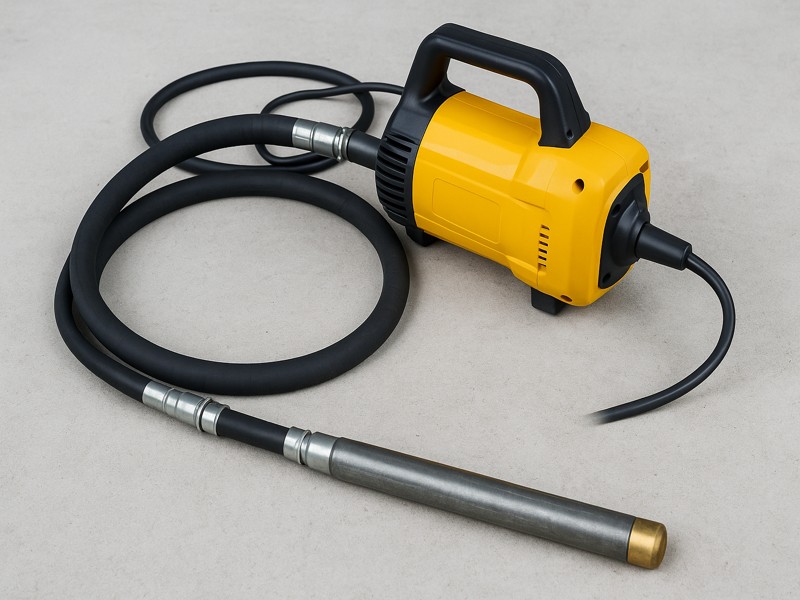
Vibrator Frequency vs. Concrete Type
Selecting the appropriate frequency depends on the concrete type and its specific application.
| Application | Recommended vpm | Reason |
| Deep foundations/piling | 6,000–8,000 | Penetrates thick concrete layers |
| Slabs and walls | 10,000–12,000 | Prevents air voids in thinner layers |
| Precast elements | 12,000–15,000 | Delicate compaction to protect molds |
| High slump concrete (wet) | 10,000–12,000 | Reduces bleeding and segregation |
| Low slump concrete (stiff) | 6,000–8,000 | Breaks resistance of drier mixes |
Power Source and Vibration Stability
The consistency of vpm during operation depends on power source reliability:
Electric Vibrators
- Most popular for indoor or urban sites
- Typically 220V–240V single-phase or 380V three-phase
- Provides consistent vpm but requires access to power
Engine-Driven Vibrators
- Ideal for remote or large-scale sites
- Diesel or petrol motors; 2–5 horsepower range
- Offers high power but can fluctuate with fuel inconsistencies
Battery-Powered Vibrators
- Gaining popularity in mobile and fast-paced construction
- May offer lower vpm but highly portable
Pneumatic Vibrators
- Used in hazardous environments or areas with explosive gas
- Provide stable frequency when paired with a good air supply
Diameter vs. Vibrations per Minute
Poker head diameter inversely affects vpm. Larger diameters offer higher compaction force at lower frequencies.
| Diameter (mm) | Typical vpm | Application |
| 25–35 | 12,000–15,000 | Thin slabs, precast panels |
| 40–50 | 10,000–12,000 | General structural work |
| 60–75 | 6,000–8,000 | Mass pours, thick footings, and columns |
Key Specifications
| Parameter | Value Range | Notes |
| Vibration Frequency | 3,000–15,000 vpm | High vpm for thin concrete layers |
| Head Diameter | 25–75 mm | Larger head = lower vpm, deeper compaction |
| Amplitude | 1–2 mm | Combined with frequency to determine effectiveness |
| Shaft Length | 1–10 meters | Longer shaft = less efficient vibration transfer |
| Power | 0.5–5.0 kW (electric) | Higher power = more stable frequency |
| Centrifugal Force | 1,500–3,000 N | Higher force = wider compaction radius |
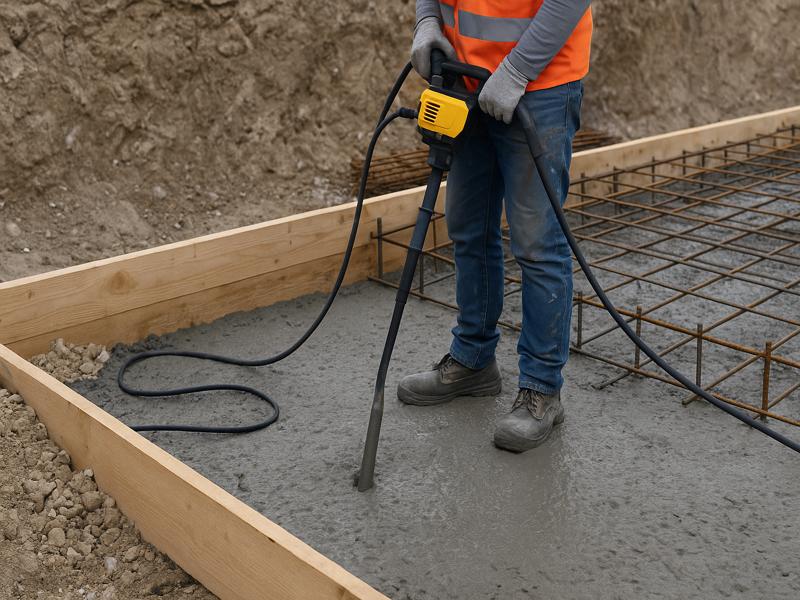
Tips for Choosing the Right Poker Vibrator
Match frequency to concrete type – High-slump mixes need fast vibrations; low-slump mixes need forceful vibrations.
Check the radius of action – Larger heads compact more area but may be less precise.
Evaluate your power source – Electric is cleaner and consistent; engine-driven gives mobility.
Prioritize durability – A worn vibrator will lose vibration performance and reduce concrete quality.
Observe results – Excessive paste rise, bleeding, or segregation means vpm may be too high.
Selecting the right poker vibrator goes beyond simply picking the highest vpm available. It’s a balance of frequency, amplitude, head diameter, motor power, and job requirements. Vibrations per minute is a critical factor, but it must be contextualized within the type of concrete, the structural element being poured, and site conditions.
To ensure success:
- Aim for 10,000–12,000 vpm for most concrete jobs.
- Go higher only for thin or delicate forms like precast.
- Choose larger heads (lower vpm) for massive pours.
A properly chosen poker vibrator not only improves compaction but ensures the strength, integrity, and durability of your concrete structures for years to come.

